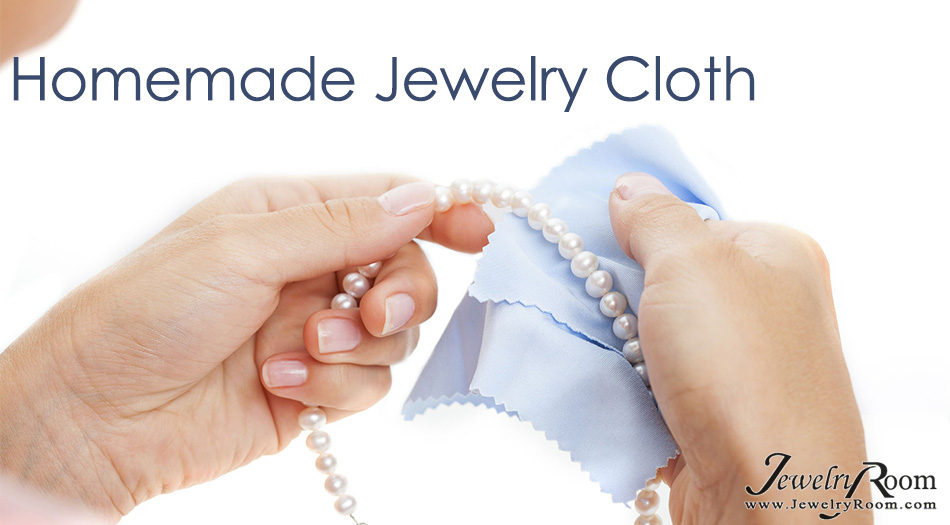
A genuine jewelry polishing cloths are made using special chemical in targeting to clean precious metals. It is best not to wash the cloth because this will remove the treatment designed for the function of polishing your jewelry.
But there are alternative ways to resolve this which I will explain more. I will also point out how to best use your jewelry polishing cloth by applying the front of the cloth and the back of the cloth.
In the beginning, once your jewelry begins to tarnish, your initial reaction is to clean it to make it shine again. But be careful in cleaning your jewelry by using any cloth because it might just destroy your jewelry or making its condition worse than its current condition.
The best way to clean your jewelry is by using it with a polishing cloth. So make sure you are using the right polishing cloths to your jewelry to make it wearable again.
When you buy polishing cloth for your jewelry, make sure you have the right one. There are cloths for gold, silver, bronze, platinum, stainless steel and other metals. These cloths are impregnated with a special chemical or treatment targeted for these metals.
For instance, if your silver jewelry tarnish, you cannot use a polishing cloth that is intended for copper because they have different chemical composition with silver. Although, many cloth makers claim that the cloth for copper may also clean for silver metal and vice versa.
Since these jewelry polishing cloths are special cloths with chemicals, it is best not to wash it as it will also wash away the polishing treatment in the cloth.
You might want to use these polishing cloths wisely so you can still use it over a period of time. So when you are looking for a polishing cloth, make sure you are looking for the right cloth intended for your jewelry.
Connoisseurs Polishing Cloth
Connoisseurs Polishing Cloth is a two-cloth-dry-cleaning system intended for cleaning and polishing jewelry and watches. This is designed to prevent and remove tarnish.
The cloth is on two sides, inner side and the outer side. The inner lighter cloth side is responsible for cleaning while the darker outer cloth is for polishing.
Remember to always check the requirement of your cloth as there is a cloth that will work only with certain metal. There may be companies that would claim that their cloth will work on any metal, may it be silver, gold, platinum or even wood finishes. That sounds too good to be true and if that may be the case, it is best to always check what you are buying.
Buying Jewelry Polishing Cloths
When buying a jewelry polishing cloth, there is a need for you to read the label closely. If you have gold jewelry, you need to buy a jewelry polishing cloth for gold only.
Remember that the jewelry polishing cloth contain a chemical and that may be harmful or dangerous to you and to your family. Make sure that the cloth you buy is hazard free, safe and non-toxic.
Please consider the following when buying a jewelry polishing cloth:
Check the Size or Dimension
If you do not know the size of the cloth, better not buy it. This is the reason why there a need for you to know the size requirement you need for your jewelry.
If you know what size of the cloth you need for your jewelry, then compare the cost of the cloth. You might want to check also if the cloth if single ply or double ply. Double ply means two cloths are sewn together with an outer cloth or inner cloth.
Check the Cloth’s Feature
Different manufacturer has different feature. Generally, what you need to check is that the cloth should be square or rectangle, and the stitching of the cloth is neat, clean and there is no thread hanging off. “Pinked and Sheared” is another feature that you might want to look for.
This means that the edges of the cloth are specially cut so that when you clean your jewelry, it will not catch the cloth and unravel.
Thickness of the Cloth
Just like when you buy a shirt, linens and textile, you need to consider the thickness of the cloth and what it is made from. The best for your jewelry is a cloth made of cotton and the linen should be plush and thick.
So when you use the cloth, it will embrace the jewelry very well. Also, please know that the thickness of the cloth has a correlation relationship with the amount of the tarnish remover the cloth can hold.
This means that the thinner the cloth is, the less amount of polish or tarnish remover in the cloth and thus will not last long.
Homemade Silver Polish Cloth
With the crisis we are experiencing nowadays, it is impractical to always buy silver polish cloth. Instead of buying a silver polish cloth, it would be wise and smart to make homemade silver polish cloths for our jewelries.
This way, you can save money in making your own homemade polishing cloth. You can also use these cloths to all other things that are made of silver metals such as utensils, tools and the like.
You might have collected some beautiful silver pieces over the years and they just sit on your drawers and cabinets. It is just right to check them from time to time to see if they tarnish.
It is best to keep your silver pieces especially jewelries polished nicely to keep it in good shape for a long period of time.
Below are the things you need to make a homemade silver polish cloth:
1. 1 cup of boiling water
2. 1 tablespoon baking soda
3. 1 tablespoon white salt
4. ½ cup vinegar
5. 1 sheet of tinfoil (shiny side up)
6. Bowl (container where you can put your jewelry)
7. Polishing Cloth
Steps to Making Homemade Polishing Cloth
Boil the 1 cup water. While you are waiting for the water to simmer, line the bottom of the bowl with the sheet of tin foil where shiny should face up. It would be best if you could cover the bowl or container with tin foil.
Then add the tablespoon of baking soda and the tablespoon of salt in the bottom of the bowl or container.
Add the ½ cup vinegar and gradually mix altogether and make sure that baking soda and salt are properly dissolved. Undissolved salt may cause damage to your jewelry or silver piece as it may scratch in the item.
Add the boiling water to your bowl or container and gently put each piece of jewelry or silver piece in the container or bowl. Just let it soak or sit in the bowl or container and the chemical reaction will do all the work for you.
If you would like, it is also best for your jewelries or silver pieces to flip once in a while to facilitate even exposure to the chemical reaction.
Take out each jewelry or silver pieces you put in the bowl or container. To avoid you do not burn or hurt yourself of the chemicals, use your polishing cloth when taking out the jewelries from the bowl.
You should be able to see that the dirt and tarnish that builds up in the jewelry come off and all gone. The shiny and glory of your silver is now back and ready to use.
Final Thoughts
I hope this has been helpful because using the method above has really helped me a lot. To save yourself some time, you can definitely make a few more cloths as for gifts or as a reserve. Especially if you are like me always misplacing your polishing cloth. Lastly, I also want to point out some of the things to avoid.
Things to Avoid
There might be a tremendous amount of tarnish in your jewelry or in your silver pieces that the polishing cloth might not remove, it is best to know the things that you need to avoid so your jewelry or silver pieces will not tarnish.
Newspaper and rubber bands
these things contain sulfur compounds that are hazardous to jewelries and silver pieces. Tarnishing of your jewelries and silver pieces is the result of the chemical reaction between sulfur and silver.
Plastic food wraps
plastic food wraps may damage your jewelries and silver pieces due to chemicals present in it. And when the tarnish in the jewelry will not be removed at once, it will adhere so tightly that you may be having a hard time to remove it.
Cardboard boxes
These cardboard boxes contain acids, which are dangerous in silver. Acids are very corrosive and therefore very hazardous to silver surfaces. So when you store your silver pieces and jewelries, store it in a box that are acid-free.

